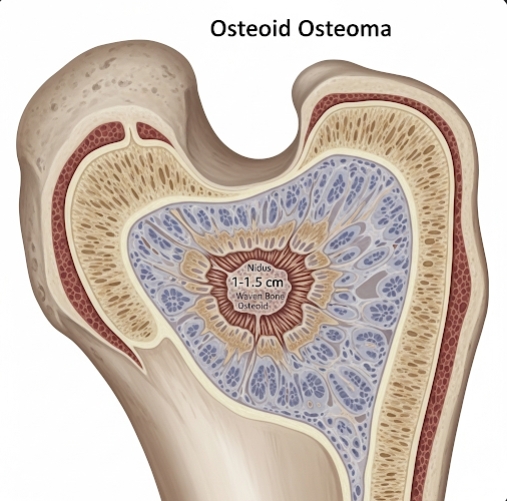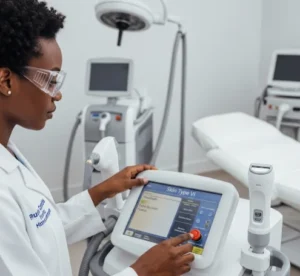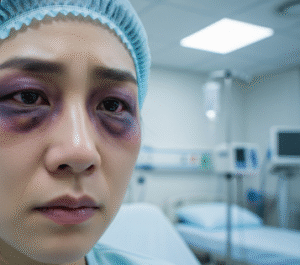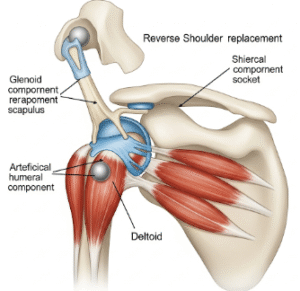Overview
Osteoid osteoma is a benign but painful bone tumor that most commonly affects children and young adults. It is characterized by a small, well-defined lesion called a nidus that causes localized bone inflammation and intense night pain, often relieved by nonsteroidal anti-inflammatory drugs (NSAIDs). In Korea, advanced imaging and minimally invasive treatments are widely available to diagnose and manage osteoid osteoma effectively, ensuring quick relief and minimal complications.
What is Osteoid Osteoma?
Osteoid osteoma is a small, benign bone tumor typically less than 1.5 cm in size. It is formed by osteoblasts (bone-forming cells) producing a nidus of immature bone surrounded by reactive bone sclerosis. Although benign, it causes significant discomfort due to inflammation and nerve irritation. The tumor most often occurs in the long bones of the legs, but it can develop in any bone.
Symptoms
Common symptoms of osteoid osteoma include:
- Intense localized bone pain, especially at night
- Pain that improves significantly with NSAIDs like aspirin or ibuprofen
- Swelling and tenderness over the affected area
- Possible limp or limited joint movement if near a joint
- Occasionally, muscle atrophy near the affected site due to disuse
Causes
The exact cause of osteoid osteoma is unknown. It is considered a benign neoplasm resulting from abnormal bone cell proliferation. There are no clear hereditary or environmental risk factors identified.
Risk Factors
Osteoid osteoma most commonly affects:
- Children and young adults between ages 5 and 25
- Males more frequently than females (approximately 2:1 ratio)
- Individuals without a family history or specific risk factors
Complications
If left untreated, osteoid osteoma can cause:
- Persistent, severe pain affecting quality of life
- Functional impairment due to pain or swelling
- Rarely, growth disturbances if located near growth plates
- Chronic inflammation leading to secondary joint problems
Prevention
There is no known prevention for osteoid osteoma due to its unclear cause. Early diagnosis and treatment are essential to reduce pain and prevent complications.
Treatment Options in Korea
In Korea, osteoid osteoma is managed effectively with:
- Conservative treatment: NSAIDs to control pain and inflammation in some cases, especially if surgery is not immediately needed.
- Minimally invasive procedures: Percutaneous radiofrequency ablation (RFA) is the treatment of choice, where the nidus is destroyed using heat under imaging guidance.
- Surgical removal: Rarely required but may be performed if RFA is unavailable or the lesion is in a difficult location.
- Post-treatment follow-up: Imaging to confirm complete removal and symptom resolution.
Korean orthopedic centers are equipped with state-of-the-art imaging and interventional radiology facilities, enabling precise diagnosis and minimally invasive treatments that reduce recovery time and improve patient outcomes.













